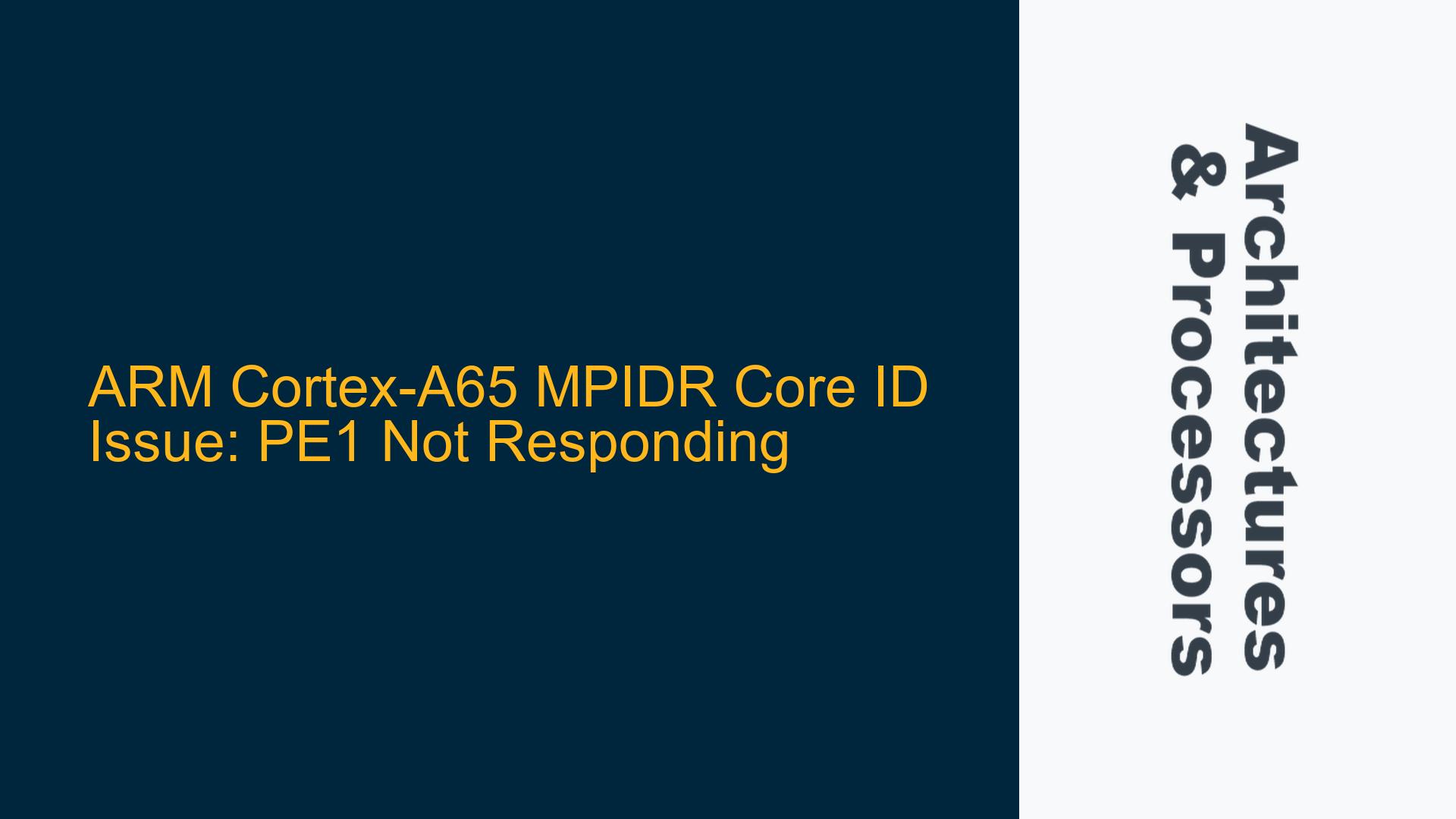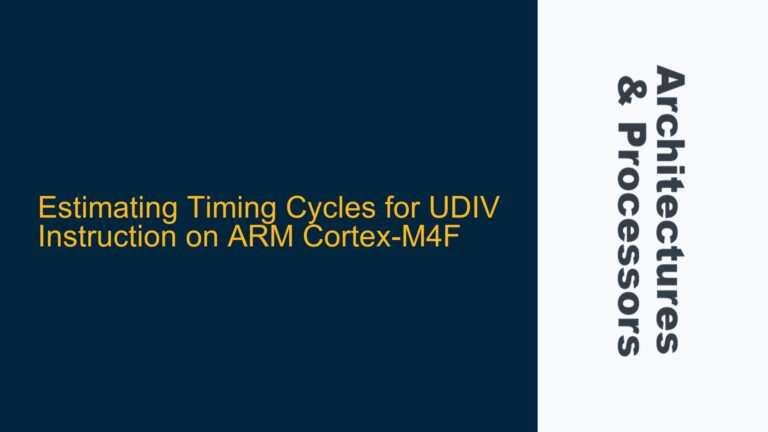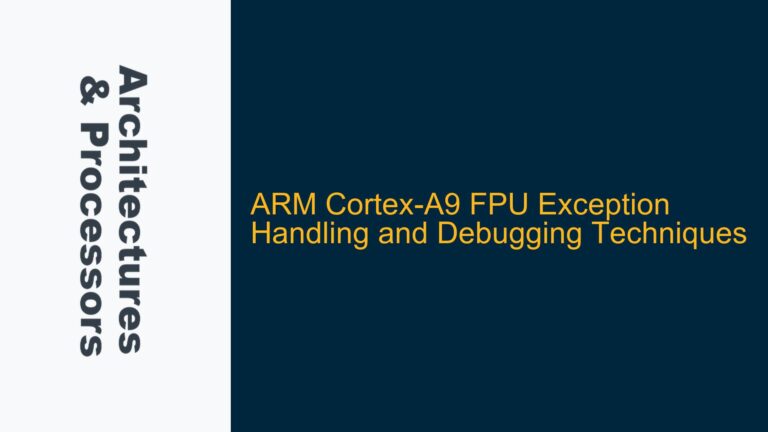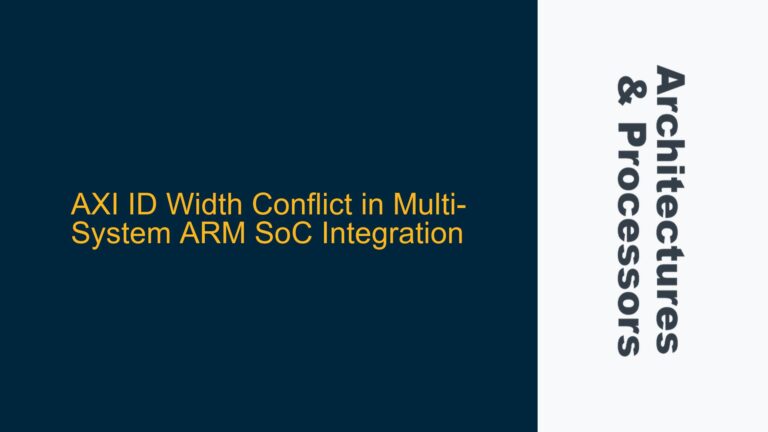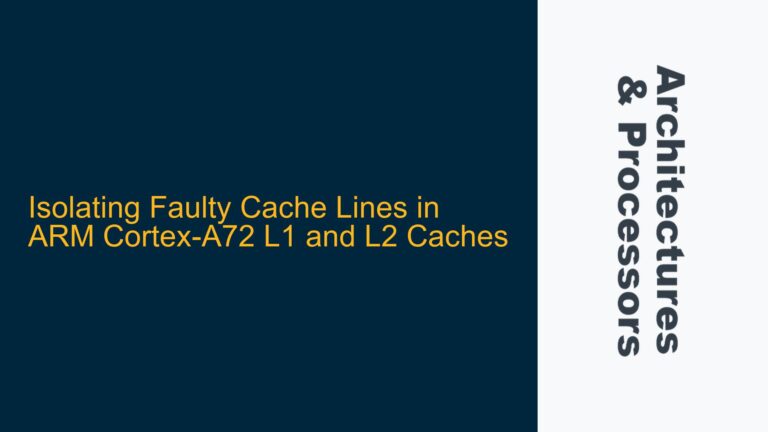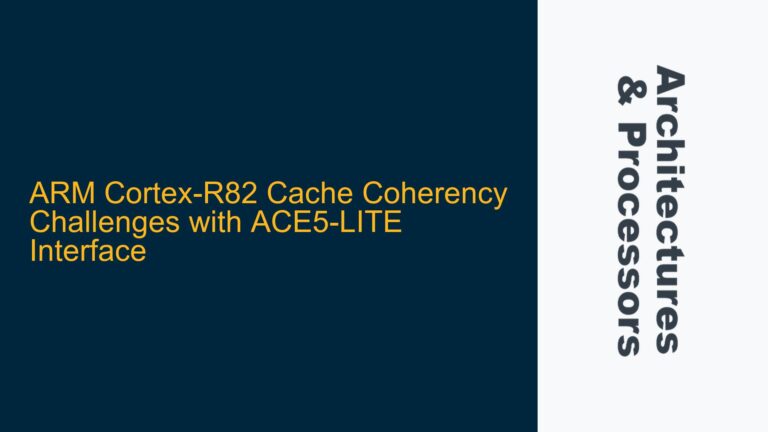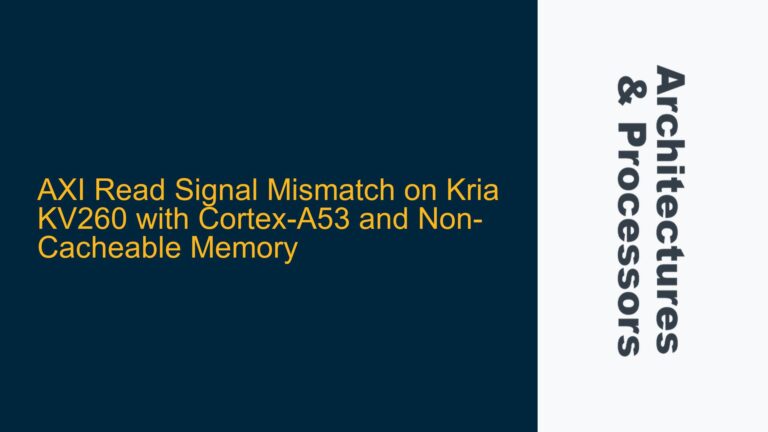ARM Cortex-A65 MPIDR Core ID Issue: PE1 Not Responding
The ARM Cortex-A65 is a high-performance processor designed for multi-core implementations, often used in scenarios requiring high throughput and scalability. One of the key features of multi-core ARM processors is the ability to identify each Processing Element (PE) using the Multiprocessor Affinity Register (MPIDR). The MPIDR provides a unique identifier for each core, which is crucial for firmware and operating systems to manage tasks across multiple cores effectively. However, in some cases, developers may encounter issues where one or more cores fail to report their core ID, leading to incomplete core enumeration and potential system instability.
In this scenario, the firmware code attempts to read the core ID using the mrc p15, 0, r1, c0, c0, 5 instruction, which accesses the MPIDR. The code then extracts the core ID by using the ubfx instruction to isolate bits 8 to 15 of the MPIDR value. While this approach works for most cores (core IDs 0, 2, 3, 4, 5, 6, and 7), core ID 1 (PE1) fails to respond, indicating that PE1 is either not initializing correctly or is stuck in an undefined state.
This issue can stem from a variety of causes, ranging from hardware initialization problems to firmware configuration errors. Understanding the root cause requires a systematic approach to debugging, including verifying the hardware setup, inspecting the firmware initialization sequence, and analyzing the MPIDR behavior.
MPIDR Initialization and Core ID Extraction Logic
The Multiprocessor Affinity Register (MPIDR) is a critical component in ARM multi-core systems, providing a unique identifier for each Processing Element (PE). The MPIDR is accessed via the mrc p15, 0, r1, c0, c0, 5 instruction, which reads the register into a general-purpose register (in this case, r1). The MPIDR contains several fields, including the Affinity levels (Aff0, Aff1, Aff2, and Aff3), which together form a hierarchical identifier for the core. For most ARM Cortex-A series processors, the core ID is typically found in the Aff0 field, which corresponds to bits 0 to 7 of the MPIDR.
In the provided firmware code, the core ID is extracted using the ubfx r0, r1, #8, #8 instruction, which isolates bits 8 to 15 of the MPIDR value. This approach assumes that the core ID is located in these bits, which is consistent with the ARM architecture documentation for many Cortex-A processors. However, the Cortex-A65 may have a different MPIDR layout, or the firmware may be misinterpreting the MPIDR value.
The fact that core ID 1 (PE1) is not appearing in the logs suggests that PE1 is either not being initialized correctly or is stuck in a state where it cannot execute the firmware code. This could be due to a hardware issue, such as a faulty core or incorrect power management configuration, or a firmware issue, such as an incomplete initialization sequence or a misconfigured MPIDR value.
Hardware Initialization and Power Management Configuration
One of the most common causes of a core not responding is improper hardware initialization. In multi-core ARM processors, each core must be initialized and brought out of reset before it can execute code. This process typically involves configuring the power management unit (PMU), setting up the clock distribution network, and ensuring that the core’s reset signal is deasserted.
In the case of the Cortex-A65, the PMU plays a critical role in managing the power states of each core. If the PMU is not configured correctly, a core may remain in a low-power state or fail to initialize altogether. This could explain why PE1 is not responding, as it may be stuck in a reset or low-power state.
Additionally, the clock distribution network must be configured to ensure that each core receives the correct clock signal. If the clock signal for PE1 is not enabled or is misconfigured, the core will not be able to execute any instructions, including the firmware code that reads the MPIDR.
Another potential hardware issue is a faulty core or a problem with the interconnect fabric. If PE1 is physically defective or if there is an issue with the interconnect that links PE1 to the rest of the system, the core may not be able to communicate with the firmware or other cores. This could result in the core being effectively "invisible" to the system, leading to the observed behavior where PE1 does not report its core ID.
Firmware Initialization Sequence and MPIDR Configuration
The firmware initialization sequence is another critical factor that can affect core enumeration. In a multi-core ARM system, the firmware is responsible for initializing each core, setting up the MPIDR, and ensuring that all cores are ready to execute code. If the firmware initialization sequence is incomplete or incorrect, one or more cores may fail to initialize properly, leading to issues with core enumeration.
In the case of the Cortex-A65, the firmware must ensure that the MPIDR is configured correctly for each core. The MPIDR value is typically set by the hardware, but the firmware may need to verify that the value is correct and consistent with the expected core ID. If the MPIDR value for PE1 is incorrect or if the firmware is misinterpreting the MPIDR value, this could lead to the core being incorrectly identified or not identified at all.
Additionally, the firmware must ensure that all cores are brought out of reset and initialized in the correct order. If the firmware attempts to read the MPIDR for a core that has not yet been initialized, the core may not respond, leading to the observed behavior where PE1 does not report its core ID.
Debugging Steps and Solutions for PE1 Not Responding
To diagnose and resolve the issue of PE1 not responding, a systematic approach to debugging is required. This involves verifying the hardware setup, inspecting the firmware initialization sequence, and analyzing the MPIDR behavior. The following steps outline a comprehensive debugging process:
Verifying Hardware Initialization and Power Management Configuration
The first step in debugging the issue is to verify that the hardware is initialized correctly. This includes checking the power management unit (PMU) configuration, the clock distribution network, and the reset signals for each core.
To verify the PMU configuration, check the power state of each core using the PMU registers. Ensure that PE1 is not stuck in a low-power state or held in reset. If the PMU configuration is incorrect, update the firmware to properly initialize the PMU and bring PE1 out of reset.
Next, inspect the clock distribution network to ensure that PE1 is receiving the correct clock signal. Use the clock control registers to verify that the clock signal for PE1 is enabled and configured correctly. If the clock signal is misconfigured, update the firmware to enable the clock for PE1.
Finally, check the reset signals for each core to ensure that PE1 is not held in reset. Use the reset control registers to verify that the reset signal for PE1 is deasserted. If the reset signal is still asserted, update the firmware to deassert the reset signal for PE1.
Inspecting the Firmware Initialization Sequence
Once the hardware initialization has been verified, the next step is to inspect the firmware initialization sequence. This involves checking the order in which cores are initialized, the
